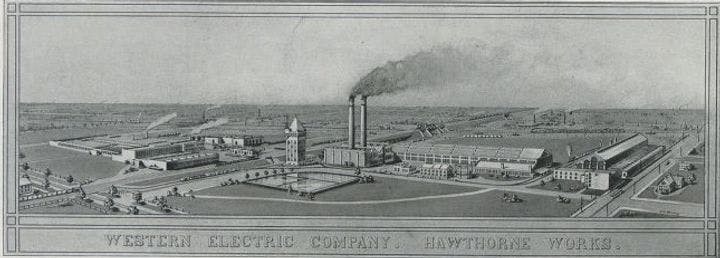Spring 2011
Researchers change their subjects’ behavior merely by studying them
– The Wilson Quarterly
Researchers can change the behavior of their subjects merely by studying them.
In 1924 the National Research Council ran a now famous experiment at Western Electric’s Hawthorne plant in Cicero, Illinois. The researchers asked a simple question: Does better lighting make workers more productive? They were surprised by what they found. Productivity improved regardless of whether the lights were low or high.
The unexpected results gave rise to one of the key insights of modern psychology, later named the Hawthorne effect: Researchers can change the behavior of their subjects merely by studying them. More broadly, the mere fact of paying attention to people makes them more productive. The Hawthorne study helped usher in a whole field of research, called industrial psychology; influenced the shape of ideas about human relations and management; and shaped the fundamentals of experimental design.
Since the 1970s, scholars have returned to the data from follow-up experiments done at the Hawthorne plant and questioned the original findings, but the data from the initial studies, conducted in 1924 and 1925, were thought to have been lost. University of Chicago economists Steven D. Levitt and John A. List were able to locate them in the libraries of the University of Wisconsin, Milwaukee, and Harvard Business School, and apply modern statistical techniques to the nearly century-old data. They find little support for the Hawthorne effect. A “naive” reading of the data does show some evidence of the effect, but much of that correlation can be explained by other, previously unexamined factors.
Remarkably, for example, the researchers always came in to alter the lighting on Sundays, when the factory was closed. They then measured the effect on Monday. But the workers were always more productive on Mondays than on other days, even when not being studied. The original researchers seem to have mistaken the day-of-the-week effect for the Hawthorne effect, Levitt and List remark. They find some evidence that workers being studied became more productive over a long period of time, but nothing strong enough to justify any big claims.
The Hawthorne effect may have risen to prominence because it had behind it “the power of a good story.” But good stories do not good science make.
* * *
The Source: "Was There Really a Hawthorne Effect at the Hawthorne Plant? An Analysis of the Original Illumination Experiments" by Steven D. Levitt and John A. List, in American Economic Journal: Applied Economics, January 2011.
Photo courtesy of Wikimedia Commons
